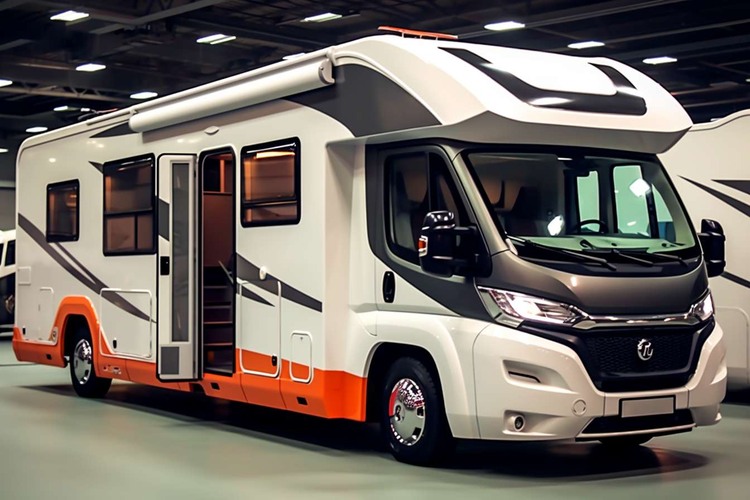Comparing Motorhomes: Which Type Suits Your Travel Style?
Discover the freedom of life on the road with a motorhome that perfectly suits your travel desires and budget. Whether you're seeking weekend getaways or extended cross-country adventures, modern motorhomes offer an incredible blend of comfort, convenience, and mobility that transforms any journey into an unforgettable experience.

What Are the Main Types of Motorhomes Available?
Motorhomes generally fall into three main classifications, each offering distinct advantages depending on your travel style and requirements.
Class A motorhomes represent the largest and often most luxurious option. These bus-shaped vehicles range from 25 to 45 feet in length and feature spacious living areas, full kitchens, bathrooms with showers, and comfortable sleeping accommodations. Many include slide-out sections that expand the interior space when parked. Class A motorhomes are ideal for full-time travelers or those seeking maximum comfort but require confidence in handling larger vehicles and typically offer lower fuel efficiency.
Class B motorhomes, also known as camper vans, are built on a van chassis and offer the most maneuverability. Though compact (typically 17-23 feet), these efficient units cleverly maximize space with convertible furniture, compact bathrooms, and streamlined kitchenettes. Their smaller size makes them perfect for travelers prioritizing ease of driving and parking, particularly in urban environments or on narrower roads.
Class C motorhomes strike a balance between Classes A and B. Recognizable by their over-cab sleeping area, these vehicles range from 20 to 30 feet and offer many amenities of larger motorhomes while remaining more manageable to drive. They typically include dedicated sleeping areas, bathrooms, kitchens, and dining spaces. Class C models appeal to families and groups who need more space than a camper van but prefer something less imposing than a Class A.
How Does Comparing Motorhomes Help Your Decision?
Comparing motorhomes systematically allows you to align your purchase with your unique travel requirements and budget constraints rather than being swayed by flashy features you may never use.
Start by evaluating your typical travel pattern. Will you be taking weekend trips to established campgrounds with full hookups, or do you prefer extended boondocking (dry camping) in remote locations? For hookup-dependent travelers, onboard amenities might take precedence, while off-grid enthusiasts should focus on water capacity, battery power, and solar capabilities.
Consider your travel party size and composition as well. Couples might find Class B motorhomes perfectly adequate, while families may require the additional sleeping quarters of Class C or A models. If you frequently host guests, motorhomes with convertible dining areas or pull-out couches provide valuable flexibility.
Driving comfort represents another crucial comparison point. Someone accustomed to operating large vehicles might have no hesitation with a 40-foot Class A, while others might prefer the familiar driving experience of a van-based Class B. Remember to consider parking requirements at home and destinations—many urban areas and national parks have size restrictions that may limit your options.
Why Consider Repossessed Motorhomes for Value?
Repossessed motorhomes offer a potentially cost-effective entry point into RV ownership, often providing significant savings compared to new models with relatively minimal use. When financial institutions reclaim these vehicles due to payment defaults, they typically aim to recover their investment quickly rather than maximize profit.
The pricing advantage can be substantial, with repossessed units frequently selling for 20-40% below comparable used motorhomes on the regular market. This value proposition becomes particularly attractive for first-time buyers uncertain about their long-term commitment to the RV lifestyle or those working with stricter budgets.
However, purchasing repossessed motorhomes requires due diligence. These vehicles rarely come with the comprehensive service history you might expect from a private seller. Prioritize professional inspections that thoroughly examine mechanical systems, water damage signs, and structural integrity. Some repossessed units may have been sitting unused for extended periods, potentially leading to maintenance issues that could offset initial savings.
Acquisition methods include bank auctions, RV-specific auction houses, and some dealerships that purchase repossessed inventory. Online platforms specializing in repossessed vehicle listings have also expanded access to these opportunities beyond local markets.
What Should You Know About Used Campers?
The used camper market offers extensive options across various price points, but navigating this landscape requires careful attention to several key factors.
Age and mileage significantly impact both value and reliability. While older motorhomes may present attractive pricing, they often require more frequent maintenance and may lack modern amenities. For gas-powered motorhomes, the 50,000-mile mark often signals the need for more comprehensive system inspections, while diesel pushers (higher-end Class A motorhomes with rear diesel engines) typically maintain reliability longer, with many performing well beyond 100,000 miles when properly maintained.
Comprehensive service records provide invaluable insights into a unit’s care history. Well-documented maintenance suggests conscientious ownership and can justify premium pricing for used units. Conversely, gaps in maintenance history warrant closer inspection and possibly price negotiation.
Water damage represents one of the most costly repairs in used motorhomes. Inspect ceilings, walls, and flooring for discoloration, soft spots, or musty odors that might indicate leaks. Pay particular attention to areas around windows, roof seams, and plumbing connections where water intrusion commonly occurs.
Current Market Pricing and Options
The motorhome market spans a wide range of price points depending on classification, features, condition, and age. Understanding current pricing trends helps establish realistic expectations when shopping.
| Motorhome Type | New Price Range | Used Price Range (3-5 years) | Key Features |
|---|---|---|---|
| Class A | $100,000-$500,000+ | $70,000-$300,000 | Spacious living areas, multiple slide-outs, residential appliances |
| Class B | $80,000-$175,000 | $45,000-$120,000 | Excellent fuel economy, easy parking, minimal setup |
| Class C | $75,000-$150,000 | $40,000-$100,000 | Over-cab sleeping area, good balance of space and maneuverability |
| Fifth-Wheel | $40,000-$150,000 | $25,000-$100,000 | Requires pickup truck, spacious floor plans, good separation of spaces |
| Travel Trailer | $15,000-$90,000 | $8,000-$60,000 | Towable by various vehicles, wide variety of floor plans and sizes |
Prices, rates, or cost estimates mentioned in this article are based on the latest available information but may change over time. Independent research is advised before making financial decisions.
The current market shows particularly strong demand for Class B motorhomes due to their versatility and efficiency. New buyers often face waiting lists with popular manufacturers like Winnebago, Airstream, and Thor Industries. Meanwhile, the used market has seen price stabilization after significant inflation during 2020-2022, making previously owned units increasingly attractive to value-conscious buyers.
Financing options have also evolved, with loan terms now extending up to 20 years for new purchases through specialized RV lenders. However, interest rates typically run 1-2% higher than automotive loans due to the recreational nature of these vehicles.
Selecting the right motorhome ultimately requires balancing your travel aspirations with practical considerations of budget, storage, and maintenance capabilities. By methodically evaluating each type against your specific needs, you’ll identify the best match for creating memorable travel experiences for years to come.




